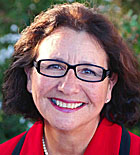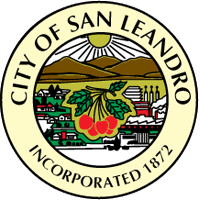Mayor Cutter at EBBC (#2): Legislative Changes Needed to Promote Broadband
 This post is continued from last week’s post, summarizing Mayor Cutter’s responses at a Mayoral panel discussion at the 3rd annual East Bay Broadband Consortium summit.
This post is continued from last week’s post, summarizing Mayor Cutter’s responses at a Mayoral panel discussion at the 3rd annual East Bay Broadband Consortium summit.
Are there any legislative changes you can think of that would help you to promote broadband in your city, either at the state or local level?
- Maintaining a competitive edge will require all cities globally to invest in building connections to the 21st century fiber optic superhighway. Like power, water, rail, highways, and sewers built in previous centuries, fiber optic infrastructure is time-consuming to plan for and expensive to build.
- In 2014 the City of San Leandro sponsored California bill AB 2292 that would allow local communities to use Infrastructure Financing Districts[1] to create community-wide broadband projects. Introduced by Assemblymember Rob Bonta, AB2292 was approved by Governor Brown in September 2014.
- Still needed: low-cost financial tools for property owners to fund construction of lateral connections between fiber in the public right of way and the business.
Given the progress that has been made at the state level in allowing municipalities to spend infrastructure funds on investing in broadband, do you have any plans to take advantage of those opportunities in the coming year?
- Use of IFD’s requires a city’s Redevelopment Agency to be completely wound down. The City of San Leandro anticipates final resolution to take at least one more year.
- All taxing entities must adopt a resolution to join the IFD and approve the plan. This will require a regional partnership – and a regional approach to building fiber optic infrastructure. The City of San Leandro would be open to joining this type of collaborative IFD focused on accelerating the regional development of broadband infrastructure.
[1] IFD’s: Effective January 1, 2015, California cities and counties can create Infrastructure Financing Districts (IFDs) to pay for regional scale public works. IFDs can divert property tax increment revenues for 30 years to finance broadband infrastructure, highways, transit, water systems, sewer projects, flood control, child care facilities, libraries, parks, and solid waste facilities. IFDs can’t pay for maintenance, repairs, operating costs, and services.








Leave a Reply